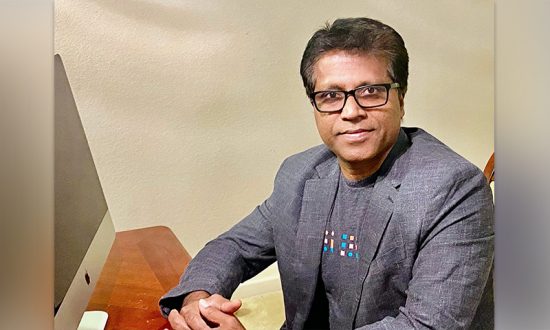Today’s world is undeniably becoming digital dependent and technology is transforming our lives in ways that we have never imagined before. From social media to GPS systems, to IoTs and artificial intelligence – these technologies are making the planet we live in better and different from what it was 10 years ago. With the pace at which these disruptive technologies are accelerating, in the coming years, the world will become more connected. So what is meant by the term connected world?
The term “connected world” is a derivative of digital transformation. It is all about connecting people, devices, and systems to the internet and exchanging and interacting with data across multiple industries such as manufacturing, healthcare, energy, transportation, infrastructure, construction, and security.
How Data and AI are accelerating the connected world?
In an ultra-connected world, data has become the most valuable and in-demand asset, with 2.5 quintillion bytes of data generated by internet users each and every day. There are billions of devices connected that instantly translate our physical world into the digital realm by identifying and analyzing data about our surroundings in real-time.
In fact, there are more devices connected than people in the world. Experts have predicted that by 2025, there will be 41.6 billion devices that will be capturing data on how we live, work, move through our cities, and operate and maintain the machines on which we depend. This vast network of devices includes – speakers, cameras, sensors, voice assistants, watches, and many more. More connections are equal to more convenience and insight in our everyday lives and various businesses.
The digital transformation is happening through data and powered by dependent technologies such as IoT, 5G, and artificial intelligence all of them collectively are fueling the adoption of connectivity advances. Artificial Intelligence is the most potentially disruptive theme in the digital and connected world. The Internet of Things (IoT) is a technology helping us to reimagine daily life, but artificial intelligence (AI) is the real driving force behind the IoT’s full potential.
From its most basic applications of tracking our fitness levels to its wide-reaching potential across industries and urban planning, the growing partnership between AI and the IoT holds the promise of a more smarter and connected future.
The major AIoT segments
Artificial Intelligence and the Internet of Things are together heading towards four major segments.
- Wearables
According to Gartner, the leading tech research firm, the global wearable device market is estimated to see more than $87 billion in revenue by 2023. Wearable devices such as smartwatches continuously track, analyze and monitor personal data such as user preferences and habits.
In the health-tech sector AIoT has led to few of the most impactful applications. Connected devices and AI-enabled technology can possibly increase life expectancy and improve the quality of life. Wearables are the most convenient and simplest tool to collect health data, monitor and interact with users on the go.
- Smart Home
Smart homes are no longer restricted to science fiction. We have houses that respond to our every request. Smart homes are leveraging appliances, lighting, electronic devices, and more. In the near future, it will be able to learn a homeowner’s habits and develop an automated “support.”
This brings along additional perks of improved energy efficiency. As a result, the smart home market will reach $246 billion between 2020-2025 with a compound annual growth rate (CAGR) of 25%.
- Smart City
With each passing day, people are increasingly shifting from rural to urban areas, cities are evolving into more safer and convenient places to live by turning towards specialized technologies. Smart city innovations are to improve public safety, transport, and energy efficiency.
Big Data processing through Artificial Intelligence can greatly contribute to the urban fabric, sustainability, and liveability dimensions.
We have already seen the practical application of AI in traffic control. For example, New Delhi, is home of some of the world’s most traffic-congested roads, an Intelligent Transport Management System (ITMS) is in use to make ‘real-time dynamic decisions on traffic flows’.
- Smart Industry
Last but not least, industries from manufacturing, aviation to mining rely on digital transformation; it is usually referred to as the Industrial Internet of Things. Smart Industry is bringing a fundamental change in the way workplaces and factories operate, making them more flexible, efficient, safer, and environmentally friendly.
The smart industry applications include real-time data analytics, edge processing, smart sensor nodes, 3D printers, industrial drones, supply chain sensors, and many more. All these smart devices will reduce the rate of human error and help prevent costly errors. In fact, Gartner also estimates that over 80% of enterprise IoT projects will incorporate AI by 2022.
Conclusion
As the world’s data is growing exponentially, artificial intelligence capabilities are tracking closely behind. Data and AI are progressively becoming mainstream. It is creating new opportunities for younger generations and people who can harness the power of advanced technologies they can chart a path to the next horizon for years to come.
Are you and your kids ready for the future connected world?


